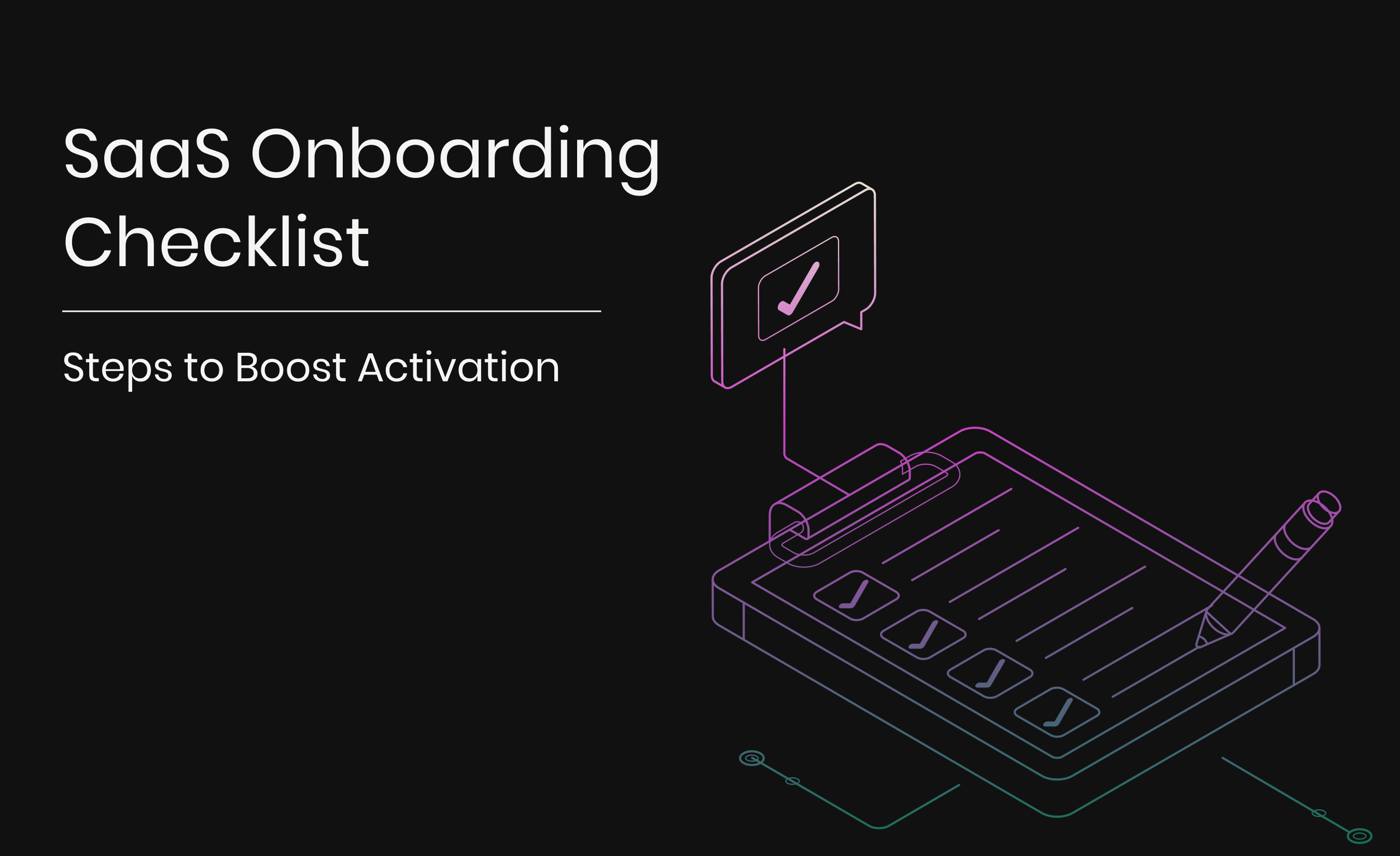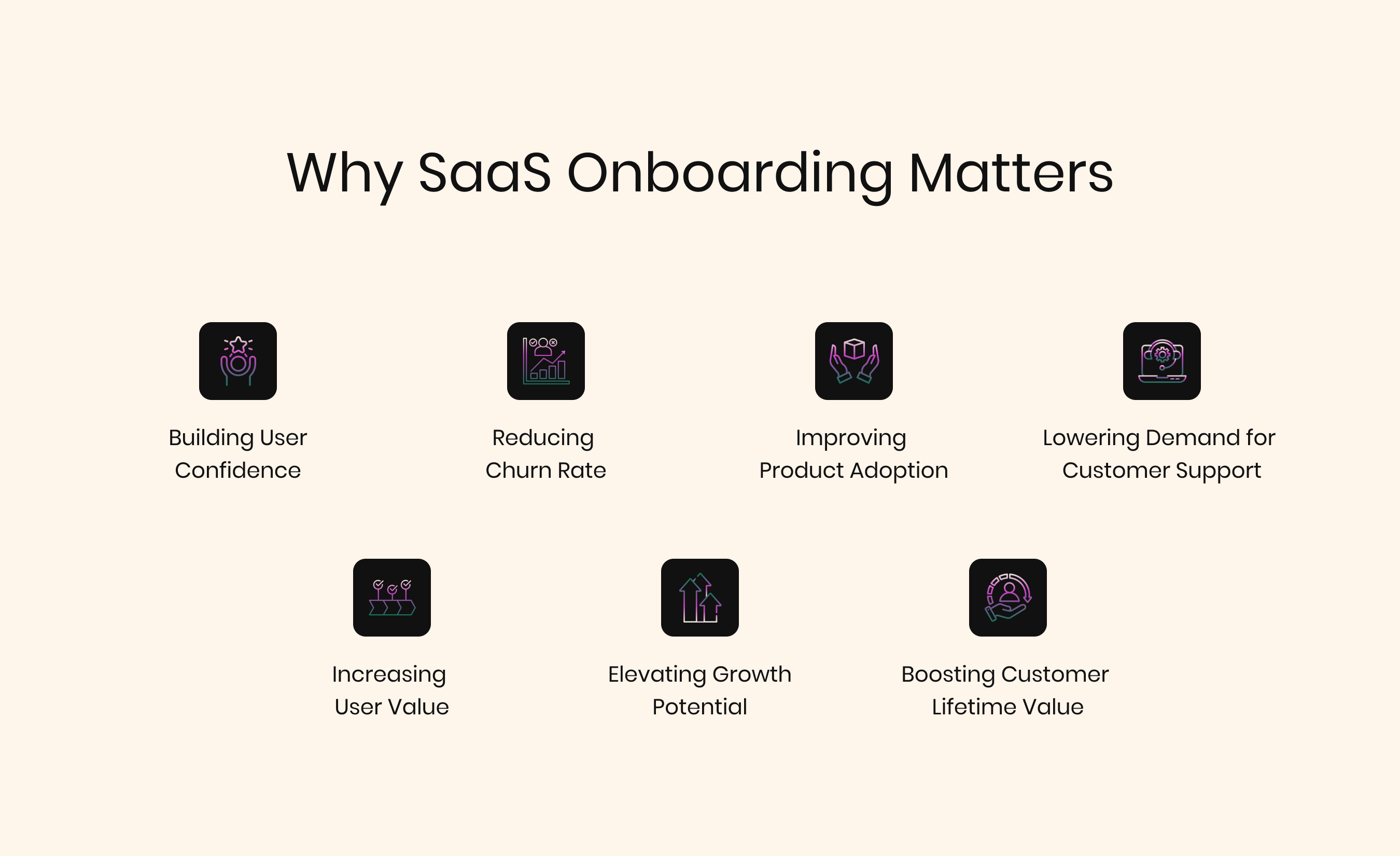RESOURCE ARTICLE
SaaS Onboarding Checklist: Steps to Boost Activation

The global SaaS market is projected to grow from USD 408.21 billion in 2025 to USD 1,251.35 billion by 2034 at a CAGR of 13.32%. In such a rapidly expanding and competitive space, every SaaS product is fighting for attention. Customers often make their decision within the first few minutes of using a new tool. If those first moments feel confusing or underwhelming, there is a high chance that users will never return.
This is why having a structured onboarding checklist is essential. It ensures that the first interaction is smooth, that customers understand the product’s value quickly, and that they are more likely to stay engaged for the long term.
A SaaS onboarding checklist provides a clear and guided path for new users, helping them understand how the product works and why it is valuable. It ensures that early interactions are smooth, purposeful, and tied to customer goals. Companies that design onboarding well often see higher activation rates, faster adoption, and stronger long-term retention.

The Core Elements of a SaaS Onboarding Checklist
An effective checklist does not overwhelm users with too many steps. Instead, it focuses on the essential actions that lead to activation. Below are the building blocks of a strong SaaS onboarding checklist.
1. Welcome and Product Tours
First impressions matter. As soon as a new customer signs up, the experience should feel warm, clear, and personalized. A well-crafted welcome sets the tone for the entire journey and creates confidence in the product from the very first click.
- Greet users with a short welcome message that sets expectations.
- Offer a guided product tour with interactive elements like tooltips or hotspots.
- Personalize where possible, such as addressing the customer by name or tailoring the tour to their role.
- Keep the tour optional but easy to revisit for those who skip it initially.
2. Onboarding Checklists
A checklist gives structure to the user journey. It breaks down onboarding into manageable tasks and shows progress along the way. When customers can see what is expected and how close they are to completing it, they feel more in control and motivated to keep going.
- Include only high-impact tasks such as completing profile setup, exploring a core feature, or inviting team members.
- Add a progress bar to show how close users are to completion.
- Provide a reward or acknowledgment message when milestones are achieved.
This sense of accomplishment helps customers feel invested in the product.
3. Account and Profile Setup
Personalization depends on collecting the right details. Encourage users to complete their profile early. A thoughtful setup process builds trust by showing that the product adapts to their needs rather than forcing a one-size-fits-all experience.
- Ask for essential information such as company type, goals, or integration needs.
- Use this data to segment users and tailor the onboarding journey.
- Avoid overwhelming customers with long forms; spread questions across multiple steps if needed.
The goal here is to reduce friction while still gathering the insights required to deliver a personalized experience.
4. Early Value Discovery
One of the most critical steps in onboarding is guiding users to their first value milestones. This is when they clearly see the value of your product. The sooner this moment happens, the stronger the emotional connection customers develop with the product.
- Identify the key feature that represents the core value for most users.
- Guide customers toward using that feature early, whether it is creating a project, sending an invite, or generating a report.
- Use prompts to bring users back if they stall mid-way through the process.
The faster customers reach this point, the more likely they are to stay engaged.
5. Surveys and Feedback Loops
Onboarding is not just about teaching. It is also about listening. Surveys provide valuable insights into what customers think and feel during their early interactions. This two-way communication makes customers feel heard and demonstrates that their feedback truly shapes the product experience.
- Collect feedback using Net Promoter Score (NPS), Customer Satisfaction (CSAT), or Customer Effort Score (CES).
- Trigger short surveys after specific actions, like completing the first project or exploring a new feature.
- Act on feedback quickly to show that customer opinions are valued.
This continuous loop helps refine onboarding and strengthens the customer relationship.
6. Interactive Demos for Complex Features
Some products have advanced functionality that cannot be explained in a short tour. Interactive demos offer a way to showcase these features without requiring one-on-one support.
- Build demos that include video, clickable hotspots, or narration.
- Use them to guide users' step by step through advanced features.
- Make demos available on-demand through help centers, emails, or in-app prompts.
This helps reduce support tickets and makes customers feel confident about exploring more of the product.
7. Ongoing Engagement
Onboarding does not end once the first checklist is complete. Ongoing engagement ensures users continue discovering value and prevents churn. Regular touchpoints keep customers connected, informed, and motivated to explore new features as their needs evolve.
- Send contextual reminders for features that customers have not yet tried.
- Offer advanced tips to encourage deeper adoption.
- Avoid overwhelming users with too many prompts at once.
The focus should be on timely guidance that adds value without becoming intrusive.
A Simple SaaS Customer Onboarding Workflow
Here is a step-by-step breakdown of how a SaaS onboarding workflow can look:
KPIs for SaaS Onboarding
Tracking the right key performance indicators (KPIs) ensures the onboarding process continues to improve. The most useful KPIs include:
- Activation Rate: Measures the percentage of users who complete core onboarding tasks, such as setting up their profile or trying a key feature. A strong activation rate shows that customers are not just signing up but are actually taking the first meaningful steps inside the product.
- Time to First Value (TTFV): Tracks how quickly users reach the moment where they experience the product’s main benefit. The shorter this time, the easier it is for customers to connect the product to their goals, which greatly improves retention.
- Checklist Completion Rate: Looks at how many users finish the onboarding checklist provided. A low completion rate can reveal friction points in the journey, while a high rate indicates that the flow is well-structured and motivating.
- Survey Scores (NPS, CSAT, CES): Capture direct customer sentiment during onboarding. Net Promoter Score (NPS) shows loyalty, Customer Satisfaction (CSAT) measures happiness with specific interactions, and Customer Effort Score (CES) highlights how easy or difficult customers find the process.
- Churn Rate: Shows how many users leave before or shortly after onboarding. A rising churn rate is often a sign that customers are not seeing enough value early, or that the onboarding process is confusing or overwhelming.
- Stickiness (DAU/MAU): Compares daily active users to monthly active users to measure how often people return. A sticky product is one that becomes part of a customer’s routine, which is often the result of a smooth onboarding process.
These KPIs together provide both a quantitative and qualitative view of onboarding success. They highlight how quickly customers get value, how engaged they remain, and where improvements are needed to strengthen the entire journey.
Best Practices for a Strong SaaS Onboarding Checklist
A SaaS onboarding checklist is only effective if it is designed with the user’s experience in mind. Best practices ensure that the process is simple, engaging, and continuously improving. By following these principles, companies can reduce friction, encourage faster adoption, and build stronger customer relationships.
Key Takeaways
- Strong first impressions reduce churn – A warm welcome and clear product tour help users feel confident from the start.
- Structured checklists guide progress – Breaking onboarding into small, visible steps motivates users to complete key tasks.
- Personalization increases relevance – Tailored journeys based on user profiles drive stronger engagement.
- Quick “aha” moments build loyalty – Helping users see value early creates a lasting emotional connection.
- Feedback and KPIs ensure growth – Surveys and metrics highlight friction points and keep onboarding effective.
Wrapping It Up!
An effective SaaS onboarding checklist is more than a to-do list. It is a carefully designed customer journey that builds confidence, accelerates value realization, and strengthens loyalty. By focusing on guided experiences, ongoing feedback, and measurable KPIs, SaaS companies can turn first-time users into long-term advocates.
Frequently Asked Questions
What is a SaaS onboarding checklist?
It is a structured set of steps that guides new users from signup to activation, ensuring they understand the product’s value quickly.
How does a SaaS customer onboarding checklist reduce churn?
It keeps customers engaged with clear guidance and feedback loops, preventing early confusion and abandonment.
What KPIs should teams track during onboarding?
Teams should measure activation rate, time to first value, checklist completion, survey scores, churn rate, and stickiness ratios.
How can product tours improve onboarding?
They simplify complex features with interactive prompts, which lowers the learning curve and encourages adoption.
Why add surveys to onboarding workflows?
Surveys capture real-time feedback and highlight friction points, enabling continuous improvement.







.svg)


.svg)

